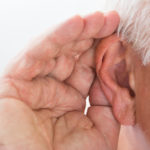Sand, Surf and Swimmer's Ear?
What, exactly, is “swimmer’s ear”? How do you catch it and how do you get rid of it?
Andrew Weil, M.D. | July 8, 2016

Originally published September 4, 2006. Updated September 6, 2012
“Swimmer’s ear” (otitis externa) is a painful inflammation, irritation, or infection of the outer ear and ear canal. It develops when water gets trapped in the ear canal and bacteria or fungi normally found there in small numbers begin to multiply. This can happen when you’ve been swimming or from showering or bathing. You can also develop swimmer’s ear as a result of using cotton swabs to clean your ear, from coming in contact with excessive bacteria in hot tubs or polluted water, and from irritation by chemicals in hairsprays or hair dyes. Swimmer’s ear can also develop if the skin of your ear canal is damaged after irrigation to remove earwax, if you have a cut in the skin of the ear canal, and from skin conditions such as eczema or seborrheic dermatitis (dandruff), which can involve the ear canal.
Symptoms usually are mild to moderate pain and itching that gets worse when you tug on your outer ear. You may feel that your ear is blocked or full. In bad cases, swimmer’s ear can cause fever, drainage, or severe pain that may spread to the side of the head, face, and neck. You may notice swollen lymph nodes around the ear and impaired hearing on the affected side.
According to the American Academy of Otolaryngology (AAO), swimmer’s ear can be treated with an acidic solution you can make yourself by mixing rubbing alcohol and white vinegar in equal proportions and introducing this compound into the affected ear with a medicine dropper; blot up any excess with a facial tissue (this is also a good preventive measure). The solution removes water from the ear canal and restores the normal pH of the tissue.
If you have fever, severe pain, or drainage, it is best to see your doctor to make sure you don’t have a perforated ear drum (even in mild cases the AAO advises checking with your doctor if you’ve ever had a perforated ear drum, or have ever had ear surgery). For more serious cases, you may need a topical antibiotic preparation; if your ear canal is swollen closed, you may need an ear wick– a small sponge placed within the ear canal to help get adequate coverage by the medicine.
The best way to deal with swimmer’s ear is to avoid getting it in the first place. You can keep water out of your ears by wearing wax or silicone earplugs when you swim. If water does get into your ears, ear-nose-and- throat specialists advise drying them out gently with a hairdryer. Try to get in the habit of shaking your head when you get out of the pool to expel trapped water. I prefer to use the alcohol-vinegar solution described above.
Andrew Weil, M.D.










